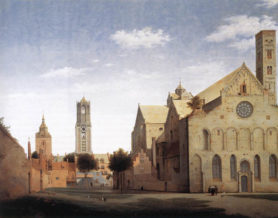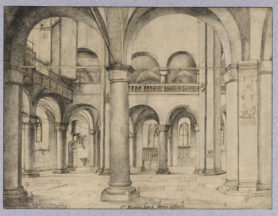5. Original Institutions
Summary
A good knowledge of the institutions in which the objects, text carriers and texts functioned can contribute to a better understanding of their use and functions. This is the reason why the MeMO database contains a database with information on these institutions.
The database distinguishes six types of institution:
- chapel
- chapter (independent chapters as well as chapters that were founded in parish churches)
- corporation (e.g. confraternity, guild)
- hospital
- monastery, convent or religious house
- parish
Besides basic data about the institution such as name, patron saint(s), date of foundation, date of dissolution and some information about the building history, the description contains:
- an overview with links to the objects and text carriers included in MeMO which certainly, probably or possibly functioned in that institution.
- a global overview of other text sources and objects from this institution that have survived but which have not been included in this database, with mention of their current location. These can be
- sources that had no memorial function, and
- sources that (may have) functioned in the commemoration of the dead, but that are outside the types of sources that have been described in this database.

Painting of the exterior of the chapter church of St Mary in Utrecht by Pieter Saenredam (1662). The Domkerk and the Buurkerk can be seen in the back. Museum Boijmans Van Beuningen, Rotterdam, inv. nr. 1765. See MeMO institution ID 127

Drawing of the interior of the chapter church of St Mary in Utrecht by Pieter Saenredam (1636). It shows various floor slabs. The church was demolished in the first half of the 19th century. HUA, Utrecht, cat. nr. 28607. See MeMO institution ID 127

